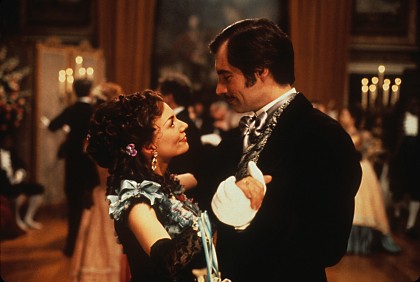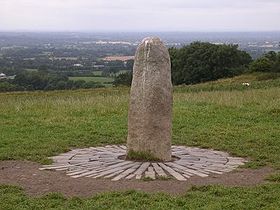For my final European post in this series, I’d like to take you back to books and an Irish Halloween story for the ages.
If you are a Gone With the Wind lover, you probably read Alexandra Ripley’s authorized sequel, Scarlett. If you didn’t, I don’t recommend it for its authentic follow-up to our checkered heroine’s past. I do, however, recommend it if you are open-minded and willing to see Scarlett through another author’s eyes. It was also made into a movie, which is available in DVD — maybe your library has it. The book got terrible reviews, but that doesn’t mean you shouldn’t read it.
Joanna Whaley and Timothy Dalton are recognizable as Scarlett and Rhett, and the costumes and sets are as richly detailed as the first movie. We see Scarlett return to her Irish roots, purchase her family’s lands that had been lost, and establish herself as The O’Hara. This occurs within the loosely historical basis of the Fenian movement in Ireland. She pretends to be a rich widow, which of course the reader knows is a lie since Rhett has divorced her and married a sweeter and calmer (boring) new wife. Scarlett is devastated but still determined to figure out a way to get Rhett back.
What the sequel doesn’t have is the rich plotlines of Mitchell’s original masterpiece. What it does have, however, is an eerie portrayal of Irish All Saint’s Eve customs. I have no idea if they are accurate or just stereotyping on the part of Alexandra Ripley, but Scarlett’s passage through her family heritage is great fun and rewarding in its own kind of way. You probably remember that the original Scarlett was a dichotomy of fear and arrogance and superstition and courage, and it’s good to see the real Scarlett reassert herself in Ireland.
I hope to visit Ireland one of these days, and I will definitely make the pilgrimage to the Hill of Tara to visit its mystical monuments. Maybe you’ll still be along for the Got My Reservations ride.
Ta-ta for now.


